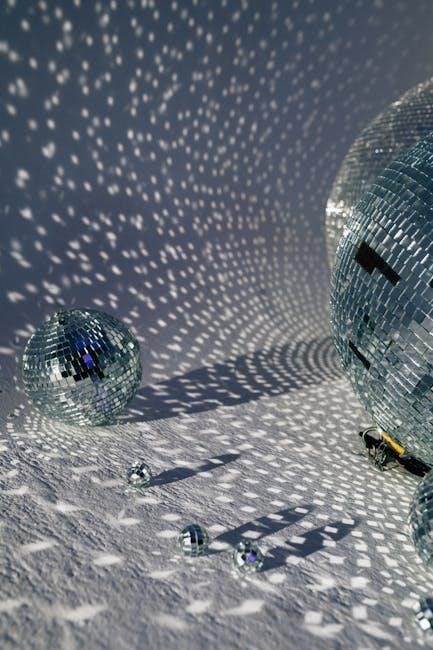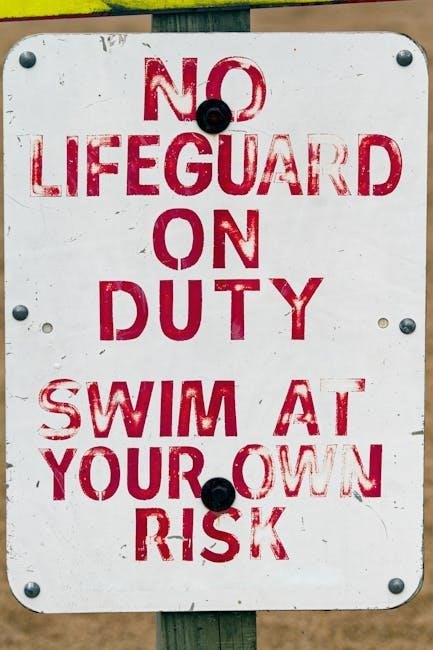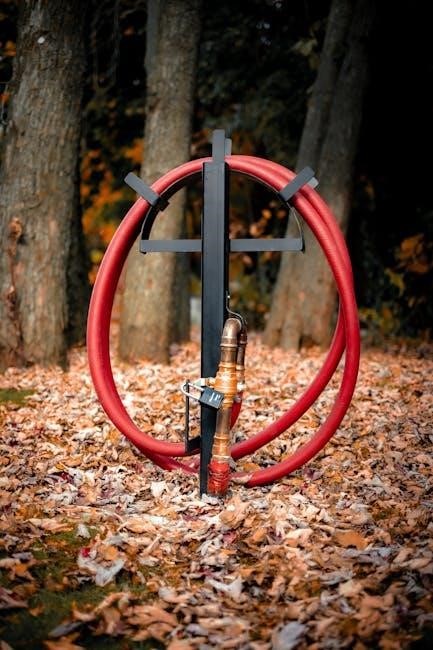Hayward Pool Pump Installation: A Comprehensive Guide
Installing a Hayward pool pump, such as the Super Pump, enhances your pool’s efficiency. This guide offers resources like instructional videos, product manuals, and troubleshooting, ensuring a smooth installation. Hayward is known for quality, providing energy-efficient solutions for pool and outdoor living.
Safety Precautions Before Installation
Prioritizing safety during any pool pump installation is paramount. Begin by disconnecting all power to the existing pump at the circuit breaker to prevent electrical shock. Always ensure the area around the pump is dry to minimize slip hazards and potential electrical issues.
Carefully review the Hayward product manual for specific safety guidelines related to your pump model. This includes understanding voltage requirements (110V/220V) and proper wiring configurations. Never operate the pump if any components are damaged, broken, or missing.
Wear appropriate personal protective equipment (PPE), such as safety glasses and gloves, to protect against debris and potential chemical exposure. If you are unfamiliar with electrical work or plumbing, consult a qualified electrician or pool professional. Ensure that all local codes and regulations are followed.
Before commencing installation, double-check that all suction outlet components are securely attached and in good working condition. This prevents entrapment hazards. Remember, a safe installation ensures years of worry-free pool operation and enjoyment for you and your family, so take your time and follow these precautions diligently.
Tools and Materials Required for Installation
Before commencing your Hayward pool pump installation, gather all necessary tools and materials to ensure a smooth process. You will need a Phillips head screwdriver for securing electrical connections and pump components. A set of pipe wrenches will be essential for tightening plumbing connections, preventing leaks.
Plumbing primer and PVC cement are needed to create a watertight seal when connecting the pump to the existing plumbing. Teflon tape can also be used on threaded connections to prevent leaks. Electrical wiring, appropriate for your pump’s voltage (110V or 220V), is crucial for safe and reliable operation.
A wire stripper and electrical tape are required for making secure electrical connections. Additionally, you may need a voltage tester to verify power is disconnected before working on the electrical components. A level will help ensure the pump is installed on a stable, even surface, reducing vibration and noise.
Depending on your specific installation, you might need PVC fittings (elbows, couplings) to adapt the pump to your existing plumbing configuration. Finally, have a pair of safety glasses and work gloves on hand for personal protection during the installation process. Having these tools readily available will streamline the installation and minimize potential delays.
Step-by-Step Installation Instructions for Hayward Super Pump
Begin by disconnecting the power supply to the old pump at the circuit breaker. Drain the existing plumbing lines before removing the old pump. Position the new Hayward Super Pump on a level surface, ensuring proper alignment with existing plumbing. Next, connect the pump to the plumbing system using appropriate PVC fittings, primer, and cement, ensuring watertight seals.
Refer to the wiring diagram for your specific model to connect the electrical wires, ensuring proper voltage (110V or 220V). Secure all electrical connections and use electrical tape for insulation. Before turning on the power, double-check all plumbing and electrical connections. Prime the pump by filling the pump basket with water.
Turn on the power at the circuit breaker and observe the pump’s operation. Check for any leaks around the plumbing connections. If necessary, tighten fittings to eliminate leaks. Allow the pump to run for several minutes to ensure proper circulation and filtration. Monitor the pump for any unusual noises or vibrations, addressing them promptly.
Finally, inspect the area around the pump for any signs of water leakage or electrical issues. Replace any safety guards or covers that were removed during the installation process. With the Hayward Super Pump properly installed, you can now enjoy a cleaner and more efficient pool system. Remember to consult the Hayward product manual for detailed instructions and troubleshooting tips.

Wiring Instructions for 110V/220V Hayward Pumps
Before initiating any electrical work, ensure the power supply to the pump is completely disconnected at the circuit breaker to prevent electrical shock. Identify the voltage requirements of your Hayward pump, whether it’s 110V or 220V, as improper wiring can damage the motor. Consult the wiring diagram specific to your Hayward Super Pump model, typically found on the motor housing or in the product manual.
For 110V connections, connect the black (hot) wire, white (neutral) wire, and green (ground) wire to their corresponding terminals inside the pump’s wiring compartment. Ensure each wire is securely fastened to the terminal. For 220V connections, typically involving two hot wires and a ground wire, follow the wiring diagram carefully, paying close attention to the correct terminal assignments.

Use appropriately sized wiring and connectors suitable for the voltage and amperage of the pump motor. After making the connections, double-check all wiring to ensure they are secure and properly insulated. Use electrical tape to wrap any exposed wire connections. Replace the wiring compartment cover and ensure it is securely fastened to prevent moisture from entering.
Once wiring is complete, have a qualified electrician inspect your work to ensure compliance with local electrical codes and safety standards. Before turning the power back on, verify all connections are tight and the pump is properly grounded. By following these wiring instructions, you can safely and effectively connect your Hayward pump for optimal performance.
Connecting the Pump to Plumbing: Inlet and Outlet
Properly connecting your Hayward pool pump to the plumbing system is crucial for efficient water circulation. Begin by identifying the pump’s inlet (suction) and outlet (return) ports. The inlet connects to the skimmer and main drain, while the outlet returns filtered water to the pool. Ensure all plumbing components are clean and free of debris.
Apply Teflon tape to the threads of all fittings to create a watertight seal. Connect the appropriate fittings, such as unions or threaded adapters, to the pump’s inlet and outlet ports. Hand-tighten the fittings, then use a wrench to tighten them further, being careful not to overtighten and crack the plastic. Align the plumbing pipes with the pump connections, ensuring a straight and smooth flow of water.
Use PVC primer and cement to join the plumbing pipes to the fittings. Apply primer to both the inside of the fitting and the outside of the pipe, then apply cement and quickly insert the pipe into the fitting. Hold the connection firmly for a few seconds to allow the cement to set. Support the plumbing pipes to prevent stress on the pump connections.
Once all plumbing connections are complete, allow the cement to cure completely before turning on the pump. Inspect all connections for leaks and tighten any fittings as needed. Ensure the pump is properly aligned and supported to minimize vibration and noise. By following these steps, you can ensure a secure and leak-free plumbing connection for your Hayward pool pump.
Priming the Pump After Installation
Priming your Hayward pool pump after installation is essential to remove air from the pump and plumbing lines, allowing it to draw water effectively. Before starting, ensure the pool water level is high enough to cover the skimmer opening. Turn off the pump’s power at the breaker to prevent accidents.
Locate the pump’s strainer pot lid and carefully remove it. Fill the strainer pot with water using a garden hose until it’s completely full. This helps displace the air in the system. Replace the strainer pot lid, ensuring it’s securely tightened to create an airtight seal. This is crucial for proper suction.
Next, open the air relief valve on top of the filter to allow trapped air to escape. Turn the pump power back on at the breaker. The pump should begin to draw water from the pool. Observe the water flow in the strainer pot. If the pump doesn’t prime within a few minutes, turn it off, refill the strainer pot, and repeat the process.
Once the pump is primed and water is flowing steadily, close the air relief valve on the filter. Monitor the pump for any unusual noises or vibrations. If problems persist, consult the Hayward product support resources. Proper priming ensures efficient pump operation and prevents damage.
Troubleshooting Common Installation Issues

After installing your Hayward pool pump, you might encounter a few common issues. One frequent problem is the pump not priming, which means it’s not drawing water. This can be due to several factors, including a low water level in the pool, air leaks in the plumbing connections, or a clogged skimmer or impeller. Ensure the water level is adequate and check all fittings for tightness.
Another issue is unusual noises, such as grinding or squealing, which could indicate a problem with the motor bearings or impeller. Inspect the impeller for debris and ensure it spins freely. If the noise persists, the motor might need professional servicing or replacement. Wiring issues can also arise, particularly with voltage mismatches.
Double-check that the pump is wired correctly for your voltage (110V/220V) and that all electrical connections are secure. Overheating is another concern, often caused by inadequate ventilation or a malfunctioning motor. Ensure the pump has sufficient airflow around it and that the motor’s cooling fan is working.
If the pump cycles on and off frequently, it could be due to a pressure issue or a faulty pressure switch. Check the filter pressure and clean the filter if necessary. Consult Hayward’s troubleshooting guides or seek expert advice from pool professionals to resolve these issues efficiently and safely. Remember safety is key when working with electrical and plumbing components.
Replacing a Hayward Pool Pump Motor: A Detailed Guide

Replacing a Hayward pool pump motor requires careful attention. First, ensure the power is completely off. Disconnect the wiring from the old motor, noting the wire connections for correct reassembly. Remove the pump housing to access the motor. Detach the impeller, which might require a specialized tool to hold the motor shaft steady.
Next, unbolt the motor from the pump volute. Before installing the new motor, replace the shaft seal to prevent leaks. Lubricate the new seal for proper seating. Attach the new motor to the volute, ensuring it’s securely fastened. Reinstall the impeller, tightening it appropriately;
Reconnect the wiring, matching the original connections. Ensure all connections are tight and secure. Reassemble the pump housing and prime the pump before starting. Check for any leaks and unusual noises; If the motor doesn’t start or makes strange sounds, immediately turn it off and recheck the wiring and connections.
This process applies to models like the Hayward Super II. Always consult the specific motor’s manual for detailed instructions. If you’re uncomfortable with electrical or mechanical work, seek assistance from a qualified pool professional. Safety is paramount, so take precautions to prevent electrical shock or injury throughout the replacement.
Hayward Pump Shaft Seal Replacement
Replacing a Hayward pump shaft seal is essential to prevent water leaks and maintain efficient pump operation. Begin by turning off the power to the pump at the breaker. Drain the pump housing by removing the drain plugs. Disconnect the plumbing connections from the pump to allow for easy access.
Remove the pump housing from the motor by unbolting it. Carefully separate the impeller from the motor shaft; this might require a specialized tool to hold the shaft. Once the impeller is off, the two parts of the shaft seal will be visible: the ceramic seal on the seal plate and the spring seal on the impeller.
Remove the old ceramic seal from the seal plate, cleaning the surface thoroughly. Install the new ceramic seal, ensuring it is properly seated and lubricated. Replace the spring seal on the impeller, noting its original orientation. Apply lubricant to the new seal to facilitate proper seating and prevent damage.
Reassemble the impeller onto the motor shaft, tightening it securely. Reattach the pump housing to the motor, bolting it together. Reconnect the plumbing connections and replace the drain plugs. Prime the pump by filling it with water before turning the power back on. Check for any leaks around the shaft seal. If leaks persist, recheck the seal installation.
Hayward Pool Pump Parts Diagram and Identification
Understanding the parts diagram of your Hayward pool pump is crucial for maintenance and repairs. Diagrams typically illustrate components like the motor, pump housing, impeller, diffuser, and various seals and O-rings. Identifying each part accurately ensures you order the correct replacements when needed.
The motor is the driving force, often detailed with voltage and horsepower specifications. The pump housing encases the impeller and diffuser, directing water flow. The impeller, driven by the motor, creates suction to draw water into the pump. The diffuser helps to efficiently convert velocity energy into pressure.
Seals, including the shaft seal, prevent water leakage. O-rings provide watertight seals between various components. Unions connect the pump to the plumbing system, allowing for easy removal and maintenance. Strainer baskets trap debris, preventing it from entering the pump and filter system.
Refer to the specific Hayward model’s parts diagram, found in the product manual or on Hayward’s support website. Diagrams provide exploded views, part names, and corresponding part numbers. Accurate identification streamlines ordering and ensures compatibility. Understanding these components empowers effective troubleshooting and maintenance. This knowledge extends the lifespan of the pump and maintains optimal pool performance.
Maintenance Tips for Optimal Pump Performance
Maintaining your Hayward pool pump is crucial for its longevity and efficient operation. Regularly inspect the pump for any signs of leaks, cracks, or unusual noises. Address any issues promptly to prevent further damage and costly repairs. Keep the pump area clean and free from debris to ensure proper ventilation and prevent overheating.
Clean the pump strainer basket frequently to remove leaves, twigs, and other debris that can restrict water flow. A clogged strainer basket reduces pump efficiency and can cause the motor to work harder, potentially leading to premature failure. Backwashing the filter regularly also helps maintain optimal pump performance by reducing backpressure.
Lubricate the pump motor bearings according to the manufacturer’s recommendations. This helps reduce friction and wear, extending the motor’s lifespan. Check the pump’s electrical connections periodically to ensure they are tight and corrosion-free. Loose or corroded connections can cause voltage drops and overheating.
Consider using a pump timer to control the pump’s operating hours, reducing energy consumption and wear. During the off-season, properly winterize the pump to protect it from freezing temperatures. Following these maintenance tips ensures your Hayward pool pump operates efficiently, reliably, and provides years of trouble-free service. Consult your owner’s manual for specific maintenance schedules and recommendations.
Hayward Product Support: Manuals, Videos, and Troubleshooting
Hayward provides extensive product support resources to assist with the installation, operation, and maintenance of their pool pumps. Accessing these resources can greatly simplify the process and help resolve any issues that may arise. The Hayward website offers a comprehensive support center, featuring a wealth of information tailored to specific pump models.
Product manuals are readily available for download, providing detailed instructions on installation, wiring, and troubleshooting. These manuals often include diagrams and step-by-step guides to ensure proper setup. Instructional videos offer visual demonstrations of various procedures, such as replacing a motor or shaft seal, making it easier to follow along.
Troubleshooting guides address common issues and provide solutions to help diagnose and resolve problems quickly. These guides often cover topics such as pump priming, leaks, and motor malfunctions. Hayward also offers a customer support hotline, where trained professionals can provide assistance and answer questions.
Online forums and communities can also be valuable resources, allowing users to share their experiences and solutions with others. Hayward’s commitment to product support ensures that customers have access to the information and assistance they need to keep their pool pumps running smoothly. By utilizing these resources, pool owners can confidently maintain their Hayward equipment and enjoy a hassle-free pool experience.
